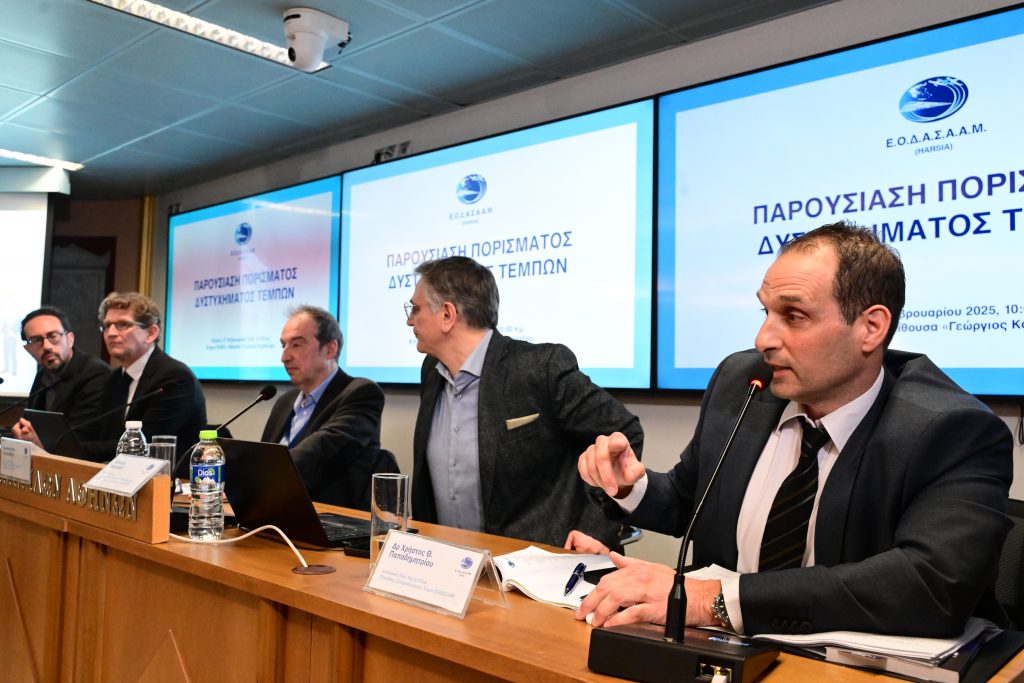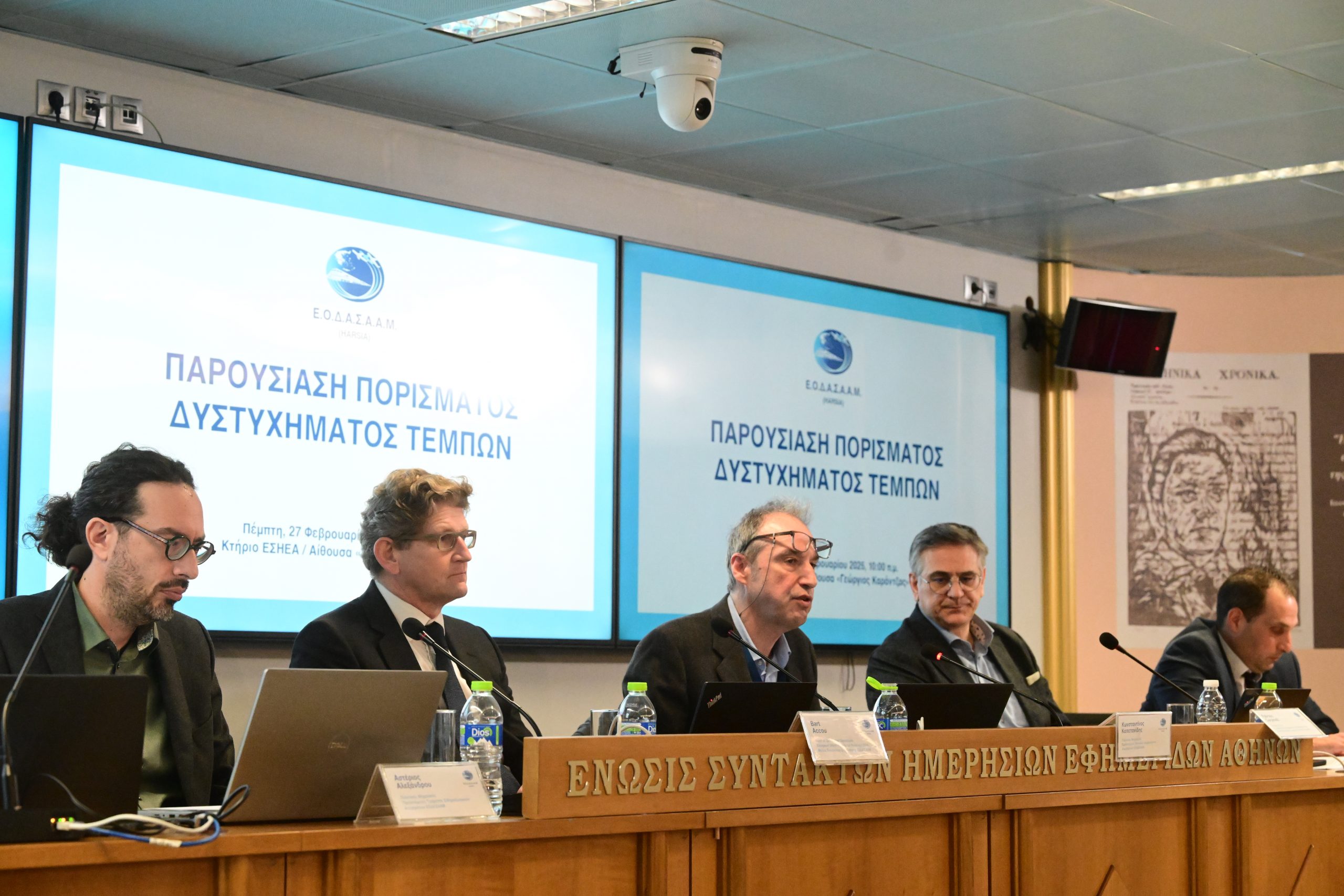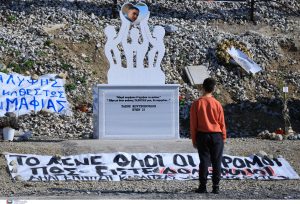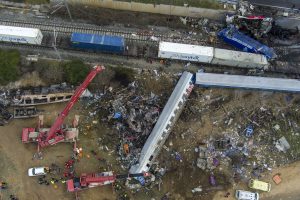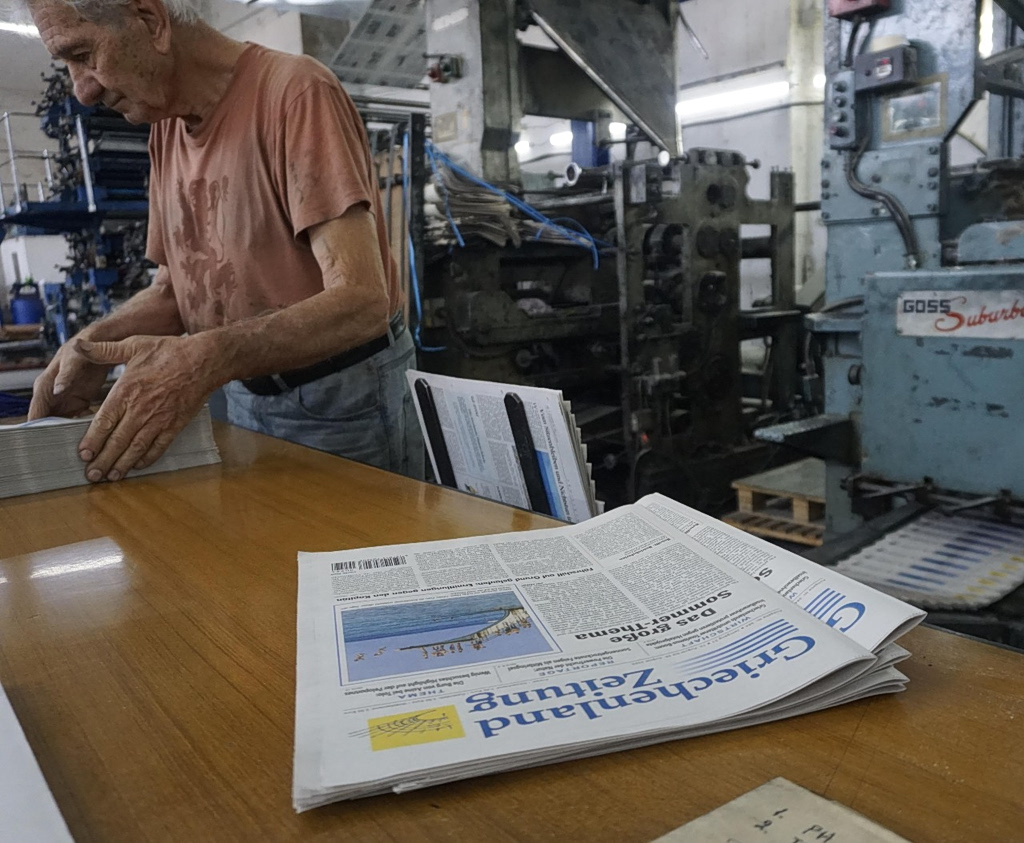“What was officially carried on the train cannot justify the fireball,” concluded the experts of the National Organization for the Investigation of Air and Rail Accidents and Transport Safety (EODASAAM) who investigated the Tempi train disaster.
On Thursday morning, the National Organization for the Investigation of Air and Rail Accidents and Transport Safety (EODASAAM) presented its long-awaited report on the Tempi train crash. One of the key issues addressed was the massive fireball that erupted after the collision, which led to several deaths, and has become a controversial topic of public debate.
The EODASAAM experts ruled out silicone oils as the primary cause. “It is very unlikely that silicone oils played a key role in the creation of the fireball. This view is confirmed by further analyses by experts,” said Bart Accou, Head of Safety and Operations at the European Railway Union and a member of the EODASAAM investigation committee.
For over a year after the crash, the Greek government asserted that the fireball was likely due to silicon oils, though Prime Minister Kyriakos Mitsotakis later changed tack as evidence and conflicting reports came out.
The EODASAAM report states that the fireball could not be explained by the train’s technical equipment or its officially recorded cargo. “Based on the observations that could be made, there is no indication that the technical equipment of the rolling stock used gave rise to the formation and expansion of the enormous fireball that arose after the impact and subsequently resulted in the secondary fires,” it reads. “With the existing evidence, it is impossible to determine what exactly caused it, but simulations indicate the possible presence of a hitherto unknown fuel.”
Hellenic Train has maintained that there were no other substances or fuels aboard their trains.
Investigators explained that there were challenges in determining the cause. “Regarding the causes of the fireball, we unanimously decided that it was not due to anything carried on the train. In order to confirm the results of the simulations and to seek the truth, we decided to turn to a reputable academic institution, either in Greece or abroad,” said Konstantinos Kapetanidis, Head of EODASAM’s Accident Investigation Unit.
He also acknowledged the difficulties in gathering crucial evidence: “It is tragically difficult to provide answers two years after the incident because of the missing data and the sampling that took place 29 days later,” he stated.
Accou noted there were the flaws in the initial investigation, and the resulting inability to conclusively determine the cause of the conflagration. “What was officially carried on the train cannot justify the fireball,” he stated. “The inspection of the accident was not carried out in the way it should have been, in order to determine the type of fuel that was being transported and caused the fireball.”
The EODASAAM report concludes that while most victims died due to the impact of the collision, the fire played a role in some fatalities. “A few victims (5 to 7) died due to the fire,” Kapetanidis noted.
Previous reports from independent experts have alleged that around 30 victims died as a result of the fire.
